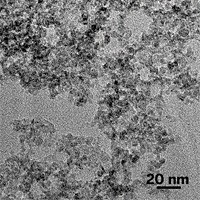Advertisement
Grab your lab coat. Let's get started
Welcome!
Welcome!
Create an account below to get 6 C&EN articles per month, receive newsletters and more - all free.
It seems this is your first time logging in online. Please enter the following information to continue.
As an ACS member you automatically get access to this site. All we need is few more details to create your reading experience.
Not you? Sign in with a different account.
Not you? Sign in with a different account.
ERROR 1
ERROR 1
ERROR 2
ERROR 2
ERROR 2
ERROR 2
ERROR 2
Password and Confirm password must match.
If you have an ACS member number, please enter it here so we can link this account to your membership. (optional)
ERROR 2
ACS values your privacy. By submitting your information, you are gaining access to C&EN and subscribing to our weekly newsletter. We use the information you provide to make your reading experience better, and we will never sell your data to third party members.
Food Science
Polymer strips off-taste from wine
Magnetic property enables easy separation of sorption medium
by Mitch Jacoby
June 23, 2018
| A version of this story appeared in
Volume 96, Issue 26

Ahh, the taste of garden-fresh veggies. Perfect for a summertime salad. For wine, not so perfect. That’s the taste sometimes imparted to wine by methoxypyrazines (MPs), a group of compounds typically found in grapes and wine at low nanogram-per-liter levels. Grapes grown in cool climates and those harvested early may contain higher concentrations of these compounds, causing an off-flavor. For example, 3-isobutyl-2-methoxypyrazine (IBMP) adds a green pepper note, and the isopropyl analog (IPMP) smells like asparagus. Wine makers can remove those compounds with heat treatments and activated charcoal. But those methods can also remove flavorful compounds. Some vintners recently began filtering with polylactic acid (PLA) because it scavenges MPs without altering wine’s flavor. Now, there’s a more efficient methoxypyrazine scavenger: magnetic polymers (J. Agric. Food Chem. 2018, DOI: 10.1021/acs.jafc.8b01397). Chen Liang, David W. Jeffery, and coworkers at the University of Adelaide prepared an MP-templated methacrylic acid polymer and treated it with magnetic iron oxide particles. Magnets easily separated the powdered form of the polymer from wine. Chromatography analyses and olfactory tests on cabernet sauvignon samples showed that the magnetic polymer outperformed PLA without altering the aroma. For example, it removed up to 74% of the IBMP compared with 18% for PLA.




Join the conversation
Contact the reporter
Submit a Letter to the Editor for publication
Engage with us on Twitter